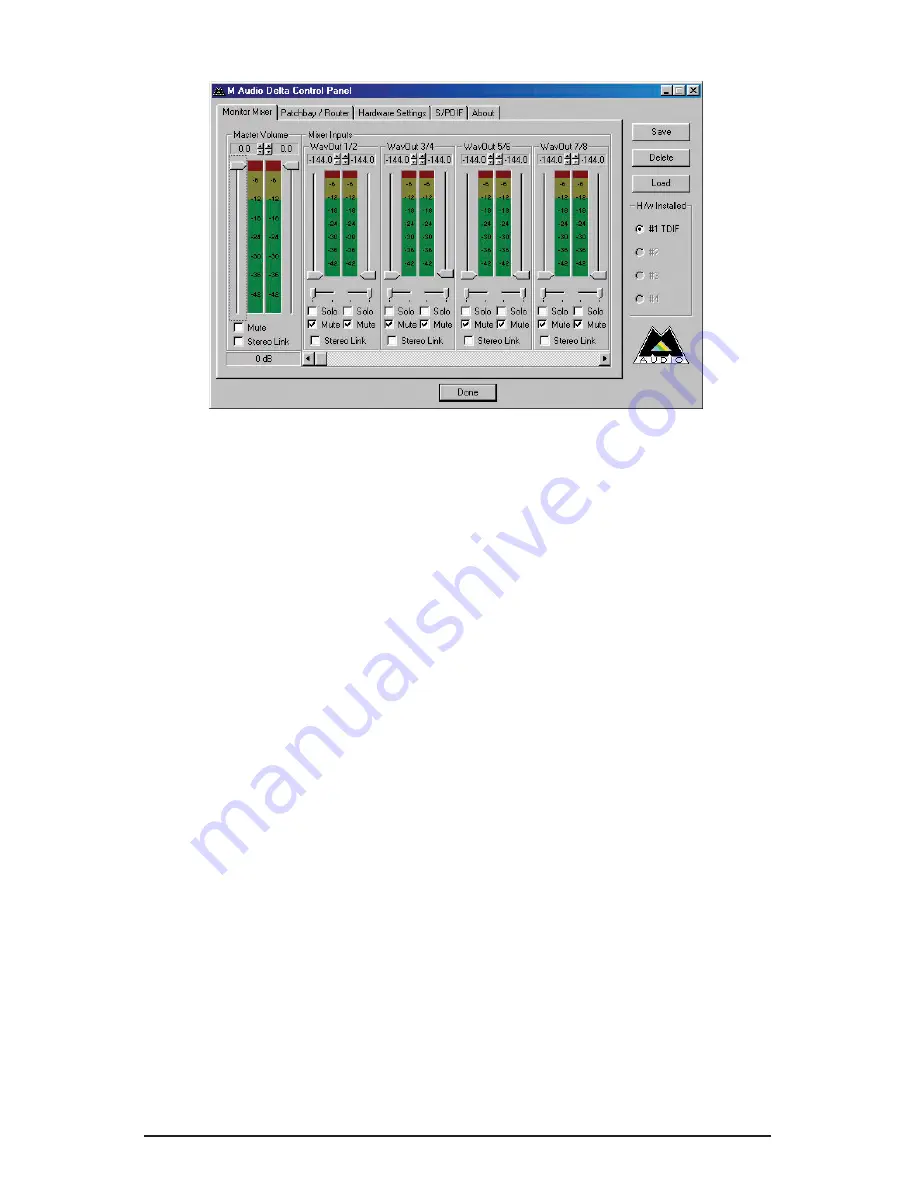
The Monitor Mixer Page is essentially a collection of volume level faders,
audio level (or ‘peak’) meters, and solo/mute controls. For each mixer
output and input channel there is one of each: a volume fader, a peak meter,
a solo control, and a mute control.
LEVEL FADERS: Each volume fader may be controlled by dragging the
fader ‘handle’ vertically with the mouse, or by clicking on the ‘handle’ to
make it active and then adjusting it with the up/down cursor keys of your
computer keyboard. Because the mixer has no gain, these faders only
attenuate (reduce) the signal levels. The highest setting is 0dB, or ‘Unity
Gain.’ The default fader setting is the quietest setting, –144dB, which
essentially mutes the audio. A pair of level faders may be "linked" so that
both channels may be adjusted together as a stereo pair.
Also, at the top of each fader and meter is a fader level "fine adjustment"
control. Clicking on the small "up" and "down" arrows will adjust the
corresponding fader setting in 0.5dB increments. Next to each fine
adjustment control is a numerical fader readout that is always current and
active.
PEAK METERS: Each peak meter indicates an audio signal level in "dB
relative to full-scale." This means that a full-scale signal is referred to as "0
dB" and a signal that is 12dB "quieter" than full-scale is referred to as "-12dB."
The meters are vertically color-coded into three sections: green, yellow and
red. The green section represents a safe zone, ranging from approximately -
48dB to -12dB. Most audio signals should appropriately fill this section of
the meter. The yellow section ranges from -12dB to -3dB as the signal
approaches a ‘hotter’ level. For best capture resolution, recording in this area
is both safe and advised. The red section of the meter ranges from -3dB to
19
















































